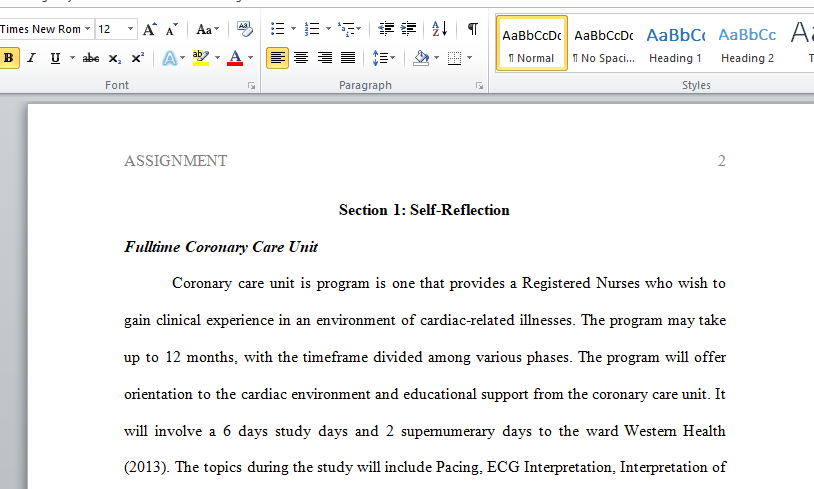Explain the following self-reflection clinical question.
Section 1 Self-Reflection
Using the website information for a graduate nurse program of your choice nominate program and summarize the description of that program in your own words.
Section 2. Clinical question.
Choose one of the following:
2.1 You are caring for a male patient who has been admitted with seizures for investigation. You go into the bathroom and find him on the floor. What would your immediate actions be?
2.2 A patient admitted through the emergency department this morning requires assistance to reposition in bed. You note that she has a pressure injury (grade 2) on her sacrum that was not mentioned when handover was given. What actions should you take?
2.3 Your patient who was admitted with meleana and is currently only taking fluids has returned from the bathroom feeling dizzy and short of breath. What will your actions be?
Explain your answer in detail including your assessment, hypotheses and rationales for actions.
Section 3. Prioritization
After morning handover of your 4 patients you have reviewed the charts and have entered the room to greet your patients. It is 0730 and breakfast is usually delivered at 0740. Before you can introduce yourself, the following demands on your time occur concurrently:
Patient 1 Mrs Peterson is asking for help to the ensuite to use her bowels. You know Mrs Peterson had a stroke 2 weeks ago and has a moderate left hemiplegia and needs assistance to move. She is classified as a high falls risk.
Patient 2 Mrs Walters is going to theatre at 0800 and is not yet ready
Patient 3 Mr Young is nil by mouth and has IV therapy running at 167mls per hour. The infusion pump alarm is sounding and the IV flask appears to be close to empty, Mr Young is also complaining of pain.Patient
4 Mr Stavropoulous has been admitted for acute asthma. He is due for ventlin andprednisolone at 0800. His BGL at 0700 was 4.6mmol/l.
The ANUM is searching for Mrs Walters pre-operative checklist and want to know if you have seen it.
In what order would you address these requests? Describe your rationale for each decision.
Section 4 Professional
Choose one of the following:
A colleague is handing over her patients to you at 0715 and you are reviewing the medication chart. The patient has a past history of aortic valve replacement 2 years ago and is on warfarin. She also has arthritis and will require an arthroscopy later this week. She is due to start Clexane today to replace the warfarin pre-op. You note that she has been given ibuprofen and aspirin overnight for pain as nurse initiated medication. You think that
NSAID’s and Aspirin are contraindicated for patients on warfarin. How will you manage this situation? Your colleague will be going home after handover.
4.2
You are collecting a patient from the theatre. Your patient tells you she has pain 6 out of 10.
She has been given Morphine 2.5mg IV 20 minutes previously. The recovery RN asks you to sort out the pain relief on the ward as they are too busy and need the space. The drug chart has Panadol and Panadeine for pain relief. You suggest that the patient should not leave recovery with uncontrolled pain and the recovery RN says “I’ve already handed over to you I can’t do anything about that now”. How will you manage this situation?
4.3
Your patient Mr Stanley is having an ascitic tap on the ward today. You have reviewed the requirements of the procedure and understand that you need to assist by caring for the patient, managing analgesia and monitoring vital signs during the procedure. It is lunchtime
in your busy ward. Your colleagues including the ANUM in charge, are off the ward having lunch. The ANUM handed over to you that Mr Stanley is having the ascitic tap after 1.30
when sufficient staff are available and that she has negotiated this with the resident medical officer (RMO). You are monitoring another patient with hypoglycaemia when you see the RMO with the procedure trolley going into Mr Stanley’s room. The procedure requires a nurse be in attendance. You have no available staff and you need to monitor your hypoglycaemic patient. How will you manage this RMO?
Describe in detail your response to your chosen scenario drawing upon your knowledge and research of professional regulations and requirements, professional behaviour, conflict resolution techniques, education and provision of feedback.
Answer preview:

Words: 1,900
